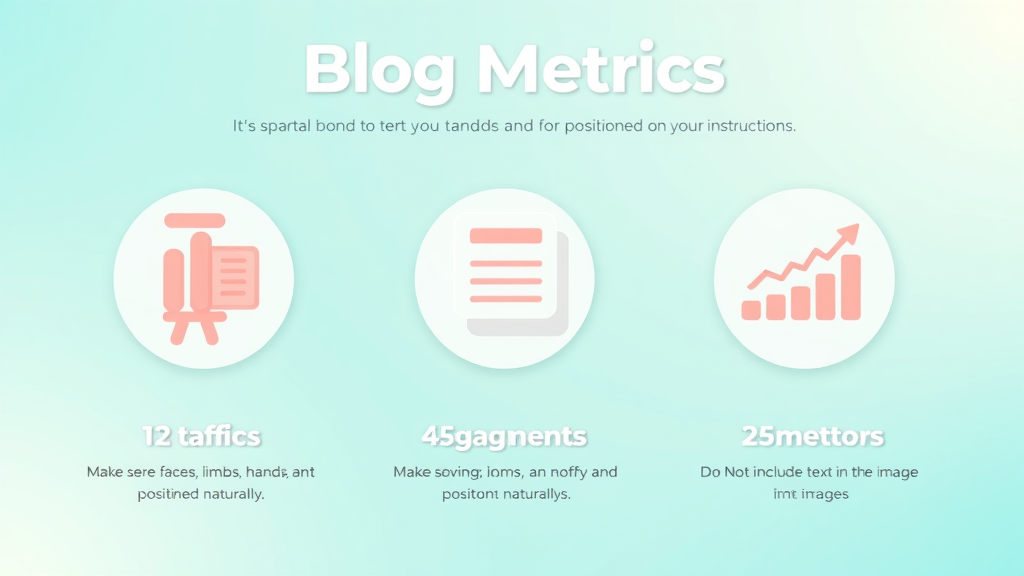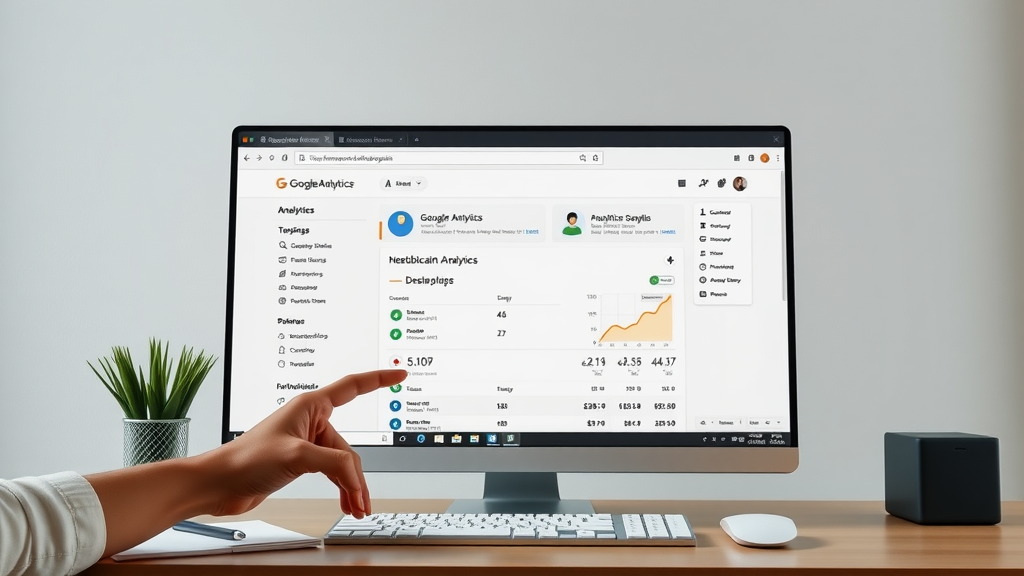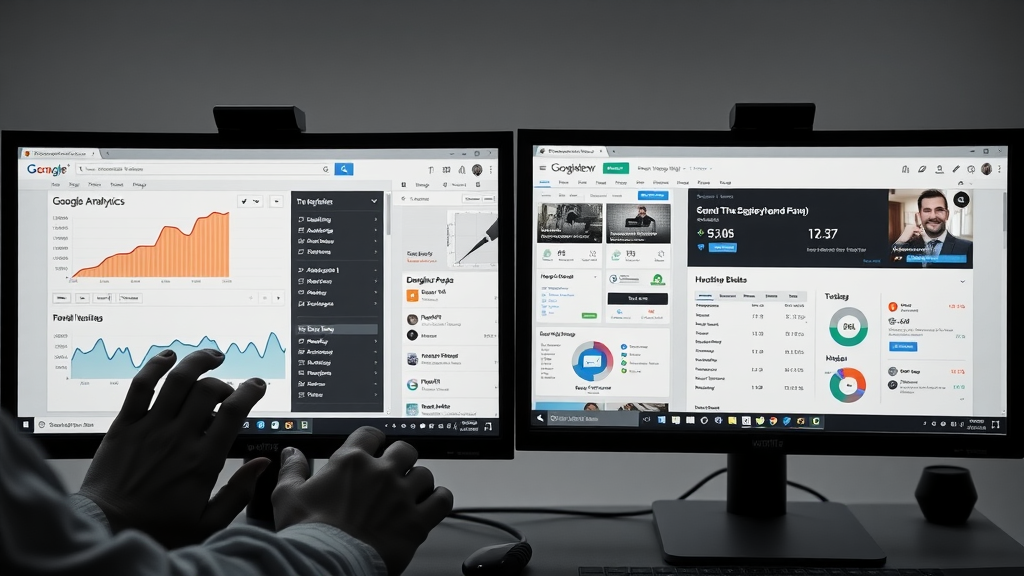Did you know that over 90% of blog content fails to generate measurable impact because most bloggers don’t track the right data? If you’re tired of publishing content and hoping for the best, it’s time to take the guesswork out of measuring blog performance. This guide offers a clear path to understanding how your individual blog posts truly perform, using proven methods and smart tools. Let’s uncover the actionable insights behind the numbers, so you can elevate every piece of blog content and drive tangible results.
Why Measuring Blog Performance Matters More Than You Think
Many creators pour hours into blog posts, only to be left wondering if their work actually resonates with their target audience or contributes meaningfully to business growth. Measuring blog performance moves you away from guesswork toward data-driven clarity. Understanding user behavior , traffic sources, and which content performs best informs every aspect of your content strategy—from the keywords you target to the calls to action you use.
When you track metrics like bounce rate , conversion rate, and organic traffic, you gain visibility into what’s working and what isn’t. This allows for continuous improvement, smarter allocation of resources, and a higher ROI for your content marketing efforts. Real-time analytics unlock the potential to refine your approach with precision, ensuring each blog post contributes to your site’s broader goals.

- Discover how data-driven decisions can outpace guesswork for every blog post.
The Essentials: What You'll Learn About Measuring Blog Performance
If you’re new to the process of measuring blog performance , you’re about to gain a game-changing perspective. This guide will walk you through the essential metrics that define content performance and show how you can leverage these insights for steady growth. Each step is designed to demystify analytics and empower you to make informed decisions.
You’ll master the basics of evaluating organic traffic, understanding the weight of bounce rate, and tracking your blog’s conversion rate. We’ll also highlight practical steps for using Google Analytics and other key tools, decoding the path from site traffic to content ROI. By the end, you’ll know exactly what to measure and how to use that information to refine your content strategy for maximum results.

- Understand the core metrics that reveal content performance
- Explore how organic traffic, bounce rate, and conversion rate reflect blog performance
- Access a step-by-step method for using Google Analytics and key reporting tools
- Apply actionable strategies to boost your blog content’s impact and ROI
Understanding the Basics of Measuring Blog Performance
Before you dive into analytics tools or set performance benchmarks, it’s important to grasp which metrics illustrate how well your blog posts and overall blog content perform. Measuring blog performance starts with establishing a foundation of key performance indicators (KPIs) that align with your content marketing and business objectives. These KPIs can include the number of views each blog post receives, the average duration of sessions, the bounce rate, and the vital conversion rate.
Understanding the basics means knowing what each metric represents. For instance, while page views reveal how much interest your content generates, unique visitors indicate how many different people are engaging with your site traffic. Bounce rate and user behavior data, such as scrolling or clicking through to another blog post, inform whether your content holds attention or needs refinement. Only when you monitor and interpret these statistics do you gain an actionable snapshot of true content performance .
Core Metrics That Show How Your Content Perform
You can’t improve what you can’t measure. The most impactful blog strategies prioritize comprehensive tracking of these core metrics:
- Page views and unique visitors: Gauge your blog’s reach and the actual audience size viewing your blog posts.
- Bounce rate and user behavior: A high bounce rate signals visitors aren’t engaging or finding what they’re looking for; analyzing user behavior helps pinpoint why.
- Average session duration and engagement: The longer users stay and interact, the more compelling your content perform. Engagement metrics such as comments and shares also indicate the value of your blog content.
- Conversion rate and goal completions: Whether your objective is collecting emails, driving sales, or prompting downloads, measuring this rate tracks your ability to move readers down the funnel.
"If you can't measure it, you can't improve it." – Peter Drucker

Linking Blog Posts to Content Performance Metrics
Every blog post should be linked to performance indicators that reflect how the content performs in the real world. Start by tagging blog posts with UTM codes and segmenting them in your analytics dashboard to isolate results. Track not just which landing page or piece gets the most site traffic, but also its source—did visitors arrive from Google search, a social media channel, or an email campaign?
Mapping these metrics back to each specific page helps you see which topics attract and engage your target audience . Over time, this data enables you to spot trends, optimize for search engines, and double down on what works, ensuring your blog content continually evolves toward higher performance.
Unpacking Blog Post Analytics: Tools and Techniques for Measuring Blog Performance
With so much data available, the right analytics tools and techniques are crucial for cutting through the noise. Google Analytics is a staple for monitoring site traffic, bounce rate, and traffic sources. However, integrating tools like SEMrush (for SEO and keyword tracking) and Hotjar (for visualizing user behavior) delivers a more nuanced picture of your blog content’s impact.
Using a combination of platforms helps to cross-reference metrics and uncover both the strengths and blind spots in your content marketing efforts. Whether you want to understand which blog posts drive the highest conversion rates or where readers drop off, leveraging these tools provides clear, actionable data for ongoing optimization.
Using Google Analytics to Track Blog Performance
Here’s a proven, step-by-step approach for using Google Analytics to track measuring blog performance metrics:
- Set up a dedicated property for all your blog content in Google Analytics.
- Identify key performance indicators for your blog posts, such as sessions, average time on page, and conversion rate from landing pages.
- Analyze data by traffic source—distinguish between organic, social, referral, and direct visitors to uncover which channels drive the best results.
- Segment your data to compare how different types of content perform, taking note of unique trends in organic traffic versus social media or paid promotion.

Key Reports for Blog Content: User Behavior and Beyond
Google Analytics delivers deep insights through its user behavior and acquisition reports. The User Behavior Flow shows the journey users take through your blog content, highlighting drop-off points and helping spot underperforming posts. The Landing Pages report pinpoints which pages serve as the main entry point to your site traffic, while Goal Completions reveal which posts drive conversions.
Beyond Google Analytics, tools like Google Search Console illuminate how your blog content performs in search results with actionable search engine data. Reviewing search queries, impressions, clicks, and rankings provides a full view of your reach on Google search, while helping optimize your on-page SEO.
Integrating these reports ensures you monitor blog performance from several angles, capturing not only the quantity but the quality of your audience engagement.
Top Content Performance Tools Beyond Google Analytics
While Google Analytics lays the foundation, a comprehensive stack for measuring blog performance includes:
- SEMrush/GA integration: Go beyond basic analytics with keyword tracking, backlink audits, and SEO analysis for each blog post.
- Hotjar: Gain visual insight into user behavior with heatmaps, recordings, and feedback polls—essential for improving the user experience and identifying pain points in your content strategy.
- Social media analytics: Measure the impact of social shares and traffic sources from platforms like Twitter, Facebook, and LinkedIn, shaping your approach to content distribution for wider reach.
| Tool | Strengths | Limitations |
|---|---|---|
| Google Analytics | Tracks traffic, user behavior, and conversion rate; integrates with Search Console; essential for overall blog content analysis | Less detail on individual SEO factors or visual engagement |
| SEMrush | Advanced SEO and keyword tracking; backlinks analysis; content audit for blog posts and inbound links | Less granular data on on-site user behavior |
| Hotjar | Heatmaps, session replay, and behavioral data; reveals scroll depth and user interaction on each blog post | Limited SEO and source traffic data; requires pairing with analytics platforms |

Decoding Organic Traffic: The Pulse of Blog Content Performance
Organic traffic remains the heartbeat of any thriving blog. This refers to visitors who found your blog posts through unpaid Google search results, demonstrating both the value of your content and its relevance to the target audience. High organic traffic signals that your content strategy aligns well with what your users are searching for, and that your SEO efforts are positioning your site content above the competition in search engines.
When you consistently measure which traffic sources bring organic visitors, and how those visitors interact with your blog, you unlock the ability to grow your reach and authority. This focus on organic performance is what differentiates data-driven content marketing from simply hoping to be found online.
Analyzing Organic Traffic to Your Blog Posts
"Quality organic traffic means an engaged audience — not just numbers."
But what exactly counts as organic traffic, and how do you interpret what it means for your blog performance? In analytics, organic visitors are those who arrive via search engines without clicking on ads. Tracking the keywords and topics that drive this traffic reveals which blog content resonates and ranks best in search results.
Use analytics tools to segment organic versus referral or social media traffic sources. Analyze how these visitors behave, such as bounce rate, session duration, and conversion rate, to refine your content strategy for future posts. The result: a blog that grows its audience and authority based on real, actionable insights—not guesswork.
- What counts as organic traffic
- How organic traffic signals blog content relevance
- Using traffic sources to refine your content strategy

Video: How to Identify Winning Traffic Sources for Your Blog Content
In a practical sense, reviewing video guides or walkthroughs can simplify the process of identifying which traffic sources consistently bring engaged visitors to your blog posts. Focus on tutorials that break down referral paths, top-performing channels, and how to leverage this data to accelerate blog performance growth. These insights empower you to enhance your content marketing and content distribution campaigns.
In summary, prioritizing organic traffic means you’re targeting growth that’s both sustainable and high-quality, ensuring lasting content performance improvements.
Beyond Clicks: Measuring Engagement and User Behavior in Blog Performance
Measuring blog performance is not just about the volume of traffic to your website. Understanding user behavior —how visitors interact with your individual blog posts—provides deep insights into content quality, relevance, and the overall user experience. Metrics such as bounce rate, average time on page, and scroll depth tell you not only if you’re attracting visitors, but also whether those visitors are truly engaging with your content.
Engagement metrics reveal how well your blog posts meet the needs and interests of your audience. Studying user journey, interaction points, and engagement hotspots helps you optimize future content, resulting in better retention and higher conversion rates over time.
Bounce Rate, Average Time on Page, and Scroll Depth Explained
- Bounce rate: This metric shows the percentage of visitors who leave your blog after viewing only one page. A high bounce rate could indicate content performance issues, misaligned search intent, or poor user experience.
- Average time on page: Time spent signals engagement; longer sessions often point to well-structured, useful blog content, while short stays may reveal gaps in your content strategy or unengaging post formats.
- Scroll depth: Measuring how far readers scroll down the page offers a more granular view of interaction with your blog posts. High scroll depth, especially on long-form content, points to successful content perform, while early abandonment may signal a need for improvement.

Table: Interpreting Key Engagement Metrics for Blog Content
| Metric | What It Means | Actionable Tip |
|---|---|---|
| Bounce Rate | High: Users aren’t sticking around; Low: Content is relevant and engaging | Relevancy and layout review |
| Average Time on Page | Long time: Content holds interest; Short time: Content lacks depth or clarity | Expand & improve quality |
| Scroll Depth | High: Visitors consume most content; Low: Content not compelling or too lengthy | Revise structure or add hooks/incentives |
Conversion-Centric Approaches to Measuring Blog Performance
Ultimately, measuring blog performance should lead to conversions—actions like signing up for a newsletter, filling out a contact form, or purchasing a product. Tracking the conversion rate associated with specific blog posts is crucial for determining your content marketing ROI and demonstrating the real business value of each post.
By focusing on user journeys and setting clear goals within Google Analytics, you can follow readers from their entry point through to completed actions. High-converting blog content not only brings in traffic but guides visitors toward meaningful next steps.
Tracking Lead Generation and Conversion Rate From Blog Posts
- Setting up goals and conversion events: Use Google Analytics to define actions you want users to take (downloads, signups, purchases).
- User journey mapping: Track how visitors progress from landing on your content to completing a desired action. This highlights strengths and friction points in your funnel.
- Case studies: Examine real-life examples where data-driven optimization of blog posts led to measurable increases in conversion rates, leveraging insights from heatmaps, behavioral metrics, and robust call-to-action strategies.
"A high-performing blog post doesn’t just generate traffic — it moves readers down the funnel."

Video: Real-World Examples of Blog Content That Converts
To amplify this section, seek out video case studies or tutorials that showcase how content marketing teams track blog conversions. These often provide step-by-step breakdowns of real scenarios, demonstrating adjustments in headlines, calls to action, or layout that resulted in a significant uptick in measured conversion rates.
Learning from actionable examples ensures your approach is rooted in what works, helping your blog content achieve both reach and results.
Refining Your Content Strategy: Using Data to Improve Blog Performance
Consistent data review is pivotal for a powerful content strategy . Whether you’re dealing with underperforming blog posts or seeking to expand your reach, data should drive your next moves. Actionable insights from blog performance metrics ensure your improvements are focused and effective.
Use the following steps to maximize value from every blog post and ensure continual growth in content performance .
What to Do With Underperforming Blog Posts
- Refresh content: Use analytics to identify outdated or thin content, then refresh posts with up-to-date information, keywords from Google Search Console, and richer media.
- Optimize headlines and calls to action: Test new titles or CTA placement using user behavior insights to increase engagement or conversion rates.
- Promote visibility: Amplify reach through internal linking and content promotion on social media and relevant communities, driving more diverse site traffic.
Consistent optimization keeps your blog content competitive and directly supports growth in both search rankings and user retention.
How to Leverage Social Media and Inbound Links for Better Content Performance
- Encourage social shares: Foster shareability by integrating clear share buttons and prompting readers at the right points in your posts.
- Build inbound links: Network with industry peers and contribute to authoritative sites to secure inbound links, increasing your domain authority and boosting organic traffic.
- Analyze social media metrics: Review shares, comments, and click-through rates on each platform to continually adapt and refine your content strategy.

People Also Ask: How do you measure blog performance?
Measuring blog performance involves tracking and analyzing metrics like traffic, engagement, conversion rate, and inbound links using tools such as Google Analytics, SEMrush, and social analytics. Regularly reviewing these metrics reveals what’s working and where improvements are needed.
People Also Ask: How to evaluate a blog?
Evaluate a blog by reviewing its content quality, engagement levels, SEO performance, organic traffic, bounce rate, and conversion rate. Cross-reference analytics data with goals to assess if the blog is meeting its objectives.
People Also Ask: How do you measure content performance?
Content performance is measured by analyzing visits, time on page, bounce rate, social shares, conversions, and inbound links. Use analytics tools to identify which content serves your content marketing and business goals.
People Also Ask: How do I know if my blog is good?
A good blog consistently attracts organic traffic, engages readers, drives shares, ranks for target keywords, gains quality inbound links, and helps achieve business goals. Monitor all key performance metrics for confirmation.
A Practical Checklist: Measuring Blog Performance for Actionable Insights
- Define clear content strategy and KPIs
- Track blog content metrics weekly or monthly
- Analyze user behavior and traffic source diversity
- Revise blog posts based on findings for continual improvement
Frequently Asked Questions
- What is the best tool for measuring blog content performance? The best tool is often Google Analytics for its comprehensive data, but integrating SEMrush and Hotjar strengthens your insights with advanced SEO tracking and user behavior visualization.
- How often should I review blog performance metrics? Review key blog metrics at least monthly, though fast-moving content or campaigns may require weekly checks to identify quick wins and issues for timely adjustments.
- Can social media shares influence blog performance? Absolutely. Social shares drive direct traffic to your website, expand content reach, and can even contribute to improved search engine rankings via inbound links and engagement signals.
- How do you measure ROI of content marketing? Calculate the ROI by tracking goal completions, conversion rate, and revenue attributable to blog content divided by the total investment, factoring in analytics costs and content creation resources.
Take Your Content Performance to the Next Level With Consistent Measurement
"The secret to successful content marketing lies in measuring, analyzing, and acting."
Ready to Improve Blog Performance? Start Measuring Smarter Today
Equip yourself with the right tools and data-driven mindset. Analyze, test, and refine each blog post regularly for evidence-based improvement — and never guess your way to content success again.
To enhance your understanding of measuring blog performance, consider exploring the following resources:
This article outlines 16 key performance indicators essential for assessing blog content effectiveness, including unique views, page views per visitor, and conversion rates.
HubSpot provides a comprehensive list of 15 KPIs crucial for monitoring blog success, such as the number of posts published, top viewed posts, and average views per post.
These resources offer valuable insights into the metrics and strategies necessary for effectively measuring and improving your blog’s performance.
 Add Row
Add Row  Add
Add 




Write A Comment